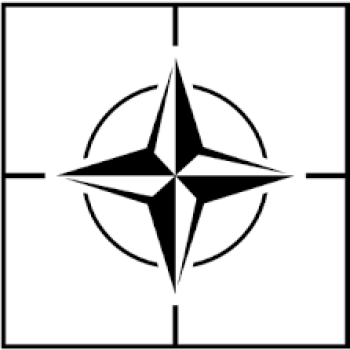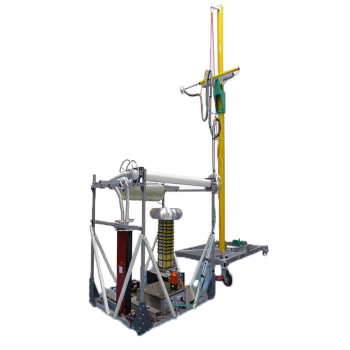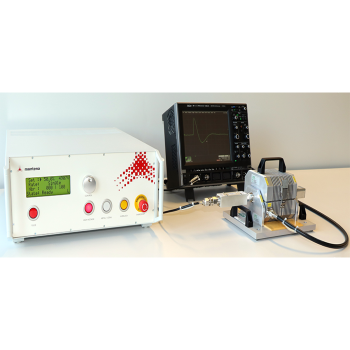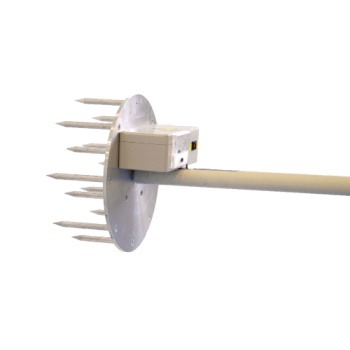
NATO AECTP-500 Leaflet 508 (STANAG 4239)
OTHER PRODUCTS IN THE SAME STANDARD:
PGESD 300K DP - Helicopter 300kV ESD Test System
- High Voltage Capability: Generates electrostatic discharges up to 300 kV with reversible polarity.
- Adjustable Electrode: Height adjustable from 1.5 to 6 meters and tilt up to ±60° for precise targeting.
- Standards Compliance: Meets MIL-STD-331, MIL-STD-464, NATO AECTP-250, AECTP-500, and more.
- Automated Operation: PC-based software for remote control, calibration, and test reporting.
- Enhanced Safety: Fiber optic interface ensures operator safety by isolating the control system from high-voltage equipment.
- Versatile Testing: Supports multiple discharge scenarios, including personnel-borne and helicopter-borne ESD tests.
- Durable Design: Built for demanding military and industrial testing environments.
ESD Pulse Generator 10 kV – PESD-ECSS-12K
- High-Voltage Range: 20 V to 10 kV, positive polarity only.
- ECSS Compliant: Meets ECSS-E-ST-20-07C Rev.2 for space-grade ESD tests.
- Damped Oscillatory Waveform: Ensures accurate wire-coupled discharge simulations.
- Remote Control & Monitoring: Offers single shot, repetitive, or remote triggering with RS-232/USB.
- Safety & Reliability: Conforms to EN61010-1 and integrates a 24 Vdc safety loop
ESD Pulse Generator 10 kV – PESD-ECSS-12K
- High-Voltage Range: 20 V to 10 kV, positive polarity only.
- ECSS Compliant: Meets ECSS-E-ST-20-07C Rev.2 for space-grade ESD tests.
- Damped Oscillatory Waveform: Ensures accurate wire-coupled discharge simulations.
- Remote Control & Monitoring: Offers single shot, repetitive, or remote triggering with RS-232/USB.
- Safety & Reliability: Conforms to EN61010-1 and integrates a 24 Vdc safety loop




